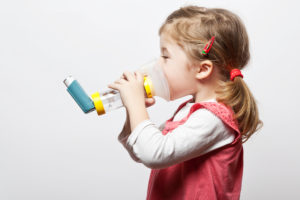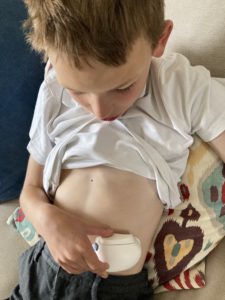A child is not a small adult. Challenges and solutions in developing drug delivery devices for children
16 October 2023
Paediatricians have been known to say, “a child is not a small adult!”. Why do they say this, and what does it mean for developing therapies and drug delivery devices?
In this article, we itemise the main differences between adults and children, and their implications, including:
- Anatomical development.
- Metabolism and pharmacokinetics.
- Patient ability and usability.
- Patient preference.
1.1 Anatomical development
The anatomical development of the child is critical in considering therapies and devices. Apart from the obvious changes in height and weight over time, there are more subtle changes that occur as the child grows. For example, the sitting height of a newborn infant represents about 70% of total body length, but at the age of 3 years this is typically 57%, and as an adult typically 50%. In newborn infants, muscle mass constitutes approximately 25% of body weight compared with 43% in adults.[1]
Growth and development are not constant processes for the individual, and they vary greatly between individuals of the same age. For newborn children, gestational age (age since conception) can be more meaningful than age since birth.
Nasal anatomy is an example where key differences exist between children and adults. Infants under 2 years old also have more diffuse lymphoid follicles throughout the nasal cavity in addition to the nasal-associated lymphoid tissue (NALT) areas found in the adult nasal cavity[2]. Infant nasal anatomy has a greater degree of similarity to rodents than that of adult humans, meaning that the results of studies with rodent models could be more applicable for human infants. This could theoretically help to accelerate development of infant nasal vaccines; however, safety and efficacy generally need to be established in adults before any infant studies can commence due to ethical reasons.
The differences in anatomy between children and adults, and between anatomical ages have many implications for drug delivery devices. For example, emergency autoinjectors that inject into the muscle needs to account for the difference in fat and muscle distribution in children, and inhalers need to be appropriate for the smaller lung capacity and inspiratory flow rates seen in children. Some injection sites that are suitable for adults might be unsuitable for young children.
1.2 Metabolism and pharmacokinetics
Children have less ability to maintain homeostasis than adults due to their greater metabolic and nutritional requirements (relative to their body mass). Most of the first year of life is characterised by immaturity of kidney and liver function, so younger children are more susceptible to dehydration, fever and other conditions. Therefore, drug delivery devices may need to allow for more regular delivery of smaller doses than for adults, or even quasi-constant drug administration, possibly under the supervision of a clinician. Dose increments may need to be smaller for children than adults.
The reticuloendothelial system, composed of macrophages found in the lymph nodes, spleen and other lymphatic tissues, is relatively more active in childhood. Lymphatic tissues such as tonsils and adenoids swell rapidly in response to minor infections. Antibody production is different in infants compared to older children or adults. Thus, drugs that influence the immune system, such as immunosuppressant monoclonal antibodies, may need to be given in different doses, to different parts of the anatomy (for example, multiple injection sites), with different pharmacokinetic modifiers (such as sustained release formulation or even implants).
When most new medicines are licensed or receive their Marketing Authorisation, they are only licensed for use in adults. This is because, on the whole, the manufacturer only investigates their safety and efficacy in the adult population. This may be either because there may be less commercial incentive to carry out studies in children, or because of an inability to recruit enough children into clinical trials. In 2004, the UK Government recognised the need for high quality research in children and young people and resolved to establish a national research network to study medicines for children.[3]
1.3 Patient ability and usability
There is a widespread trend across healthcare to move treatments from the hospital to general practitioner, and from the general practitioner to self-administration. Reasons for this are well documented and tend to focus on patient convenience and reduction of healthcare costs.
However, there are additional considerations in the case of treating children compared to most adults.
The ability of the child to administer drugs to themselves is likely to be limited, especially for younger children. In the first few years of life, “the user” is going to be an adult, for example a parent, other carer, or clinician. The separation of “user” from the “patient” means that device design might need to be modified. Imagine an onbody delivery system where the user interface is designed for the patient to operate but in this case somebody else must operate it. A display or icon designed for the patient to see when they look down at their stomach will be upside down when viewed by a user who is facing the patient.
- Child positioning a wearable injector
Training and instructions for use can be more complicated for treating children because multiple people (child, parent, clinician…) may need to be involved, each having different roles, and each with different levels of life experience and learning needs. A study of the readability of manufacturers’ Patient Information Leaflets for commonly used medicines for children showed that 9 out of 10 could not be read at a reading age of 13. Indeed, many adults would not be able to use those instructions because 9% of adults have the reading age of 13 or lower.[4]
Young children may find it more difficult to alert adults to adverse events such as pain, nausea or swelling, and so extra care must be taken to ensure that the drug delivery device and drug are not causing excessive side effects.
Coordination of movement can be harder to achieve for children than adults. There are many studies showing that adults struggle to coordinate the activation of a pressurised metered dose inhaler with their inhalation manoeuvre. The smaller lung capacity and inspiratory flow rate of children mean that the optimal activation window is even smaller. Therefore, many children need to use a spacer with a pressurised metered dose inhaler.[5] Even then, around 20% of children under 2 years old cannot generate the inspiratory pressure to open a unidirectional valve of a valved-holding chamber (VHC).[6]

Child using a spacer to aid drug delivery
1.4 Patient preference and adherence
Medical devices for adults are tending to look increasingly like consumer products due to patient preference (such as fitting with their lifestyle image) and user interface expectations.
Children are likely to have different preferences and values from adults. Some pharmaceutical and medical device companies have made progress in adapting devices for the tastes of children, for example by having superhero or other graphic themes on the device.
Some companies have considered adding fun or engaging features to drug delivery devices which could motivate children to adhere to the instructions for use, for example adapting an inhaler to play a sound when inhaling correctly. Others have added “gamification” to devices so that children feel more engaged, motivated, and positive about interacting with their therapy regime.
There is evidence of adverse consequences because of low compliance in children in prophylactic treatments, especially in antibiotics, asthma, epilepsy and lymphoblastic leukaemia.
Adolescence poses a special challenge when it comes to compliance with treatment: evidence show low rates of adherence in cystic fibrosis, diabetes, and asthma.[7]
1.5 Summary
We have seen how the differences in the anatomy, metabolism, ability, and preferences of children demand customisation of drug delivery devices to meet their needs.
Contact us today for help and advice on your drug delivery device.
Written by: Tom Oakley and Heather Jameson and featured in On Drug Delivery Magazine.
References:
[1] Childhood disease and disorder – Developmental, Genetic, Environmental | Britannica
[2] Cai L, Xu H, Cui Z. Factors Limiting the Translatability of Rodent Model-Based Intranasal Vaccine Research to Humans. AAPS PharmSciTech. 2022 Jul 12;23(6):191. doi: 10.1208/s12249-022-02330-9. PMID: 35819736; PMCID: PMC9274968.
[3] Medicines for Children and Young People
[4] Medicines for Children and Young People
[5] How to choose delivery devices for asthma Arch Dis Child 2000;82:185–191 185.full.pdf (bmj.com)
[6] Spacer devices for inhaled therapy: why use them, and how? | European Respiratory Society (ersjournals.com)



